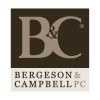The SCCS has published a final paper on their “Scientific advice on the safety of nanomaterials in cosmetics” as a response to a mandate from the Commission who had previously expressed concerns regarding the intrinsic properties of nanomaterials, as a category, in light of their nano-scale dimension, bio-persistence and insolubility.
Through a review of the available information and expert judgment, the SCCS has identified certain aspects of nanomaterials that constitute a basis for concern over safety to consumers’ health when used in cosmetic products. These include:
Physicochemical aspects relating to: very small dimensions of the constituent particles; solubility/persistence; chemical nature and toxicity of the nanomaterial; physical/morphological features of the constituent particles; surface chemistry and surface characteristics (surface modifications/coatings);
Exposure aspects relating to: the frequency and the amounts used, whether the number/type of consumer product(s)used is relatively high; and whether there is a potential for systemic exposure of the consumer to nanoparticle sand potential accumulation in the body;
Other aspects relating to: novel properties, activity or function, and specific concern arising from the type of application. A detailed account of these aspects is presented here. The nanomaterials listed in the EC catalogue of nanomaterials of 2019 have been tabulated in an order of priority according to risk potential in Annex 1 of the previously mentioned Advice document.
For the nanomaterials with inconclusive SCCS opinions, such as [Colloidal Silver (nano) (SCCS/1596/18), Styrene/Acrylates copolymer (nano) + Sodium styrene/Acrylates copolymer (nano) (SCCS/1595/18) and Silica, Hydrated Silica, and Silica Surface Modified with Alkyl Silylates (nano form) (SCCS/1545/15)], the SCCS is requested to assess if a potential risk can be identified according to Article 16(6) Reg.1223/2009. Such assessment, regardless of the data previously submitted by the respective applicants, should be based on the available scientific literature and SCCS’ expert judgement (i.e. systemic or local availability; harmful effects specifically related to nano-form; surface catalysed reactions in nano-form, absorption (or potential absorption) from dermal and inhalation routes, potential of nano-form to deliver ionic forms, etc.).*
The SCCS has reviewed previous inconclusive opinions on three nanomaterials (SCCS/1596/18; SCCS/1595/18 and SCCS/1545/15), in conjunction with any further relevant information available in published literature to identify whether there is a scientific basis for concern over their safety to consumers’ health when used in cosmetic products. The SCCS has identified certain aspects relating to each of the nanomaterials that raise a safety concern. These have been detailed in three separate annexes (2, 3 and 4) to the aforementioned Advice.



















